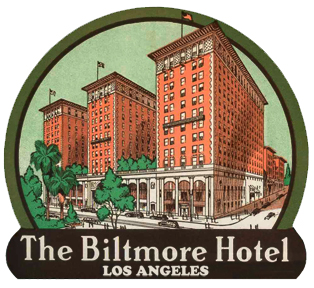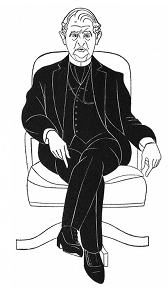Jimmy Starr began his career in Hollywood in the 1920s, writing the intertitles for silent shorts for producers such as Mack Sennett, the Christie Film Company, and Educational Films Corporation, among others. He also toiled as a gossip and film columnist for the Los Angeles Record in the 1920s and from 1930-1962 for the L.A. Herald-Express.
Starr was also a published author. In the 1940s, he penned a trio of mystery novels, the best known of which, The Corpse Came C.O.D., was made into a movie.
In 1926, Starr authored 365 Nights in Hollywood, a collection of short stories about Hollywood. It was published in a limited edition of 1000, each one signed and numbered by the author, by the David Graham Fischer Corporation, which seems to have been a very small (possibly even a vanity) press.
Here’s “Reckless Reels” from that 1926 collection.
RECKLESS REELS
 . . . a jazz band . . . colored spotlights . . . evening gowns . . . and stiff shirts . . . laughter . . . silver flasks . . . smacked lips . . . bluish-grey clouds of lingering smoke . . . The Biltmore ballroom on Saturday night . . . the new playground of the movie folk . . . Art Hickman . . .
. . . a jazz band . . . colored spotlights . . . evening gowns . . . and stiff shirts . . . laughter . . . silver flasks . . . smacked lips . . . bluish-grey clouds of lingering smoke . . . The Biltmore ballroom on Saturday night . . . the new playground of the movie folk . . . Art Hickman . . . Alma Rubens strolls along with Ricardo Cortez . . . softly on the heavily napped carpet . . . her gown of silver cloth and royal blue sparkles . . . Rick with his polished black hair . . . immaculate shirt and carefully fitted Tux . . . sparkles . . . murmurs of the “outsiders” sitting along the sides in deep chairs . . . Alma and Rick smile and speak to one or two couples passing. . . .
A very young chap and “deb” are about to enter . . . he notices a small sign—very small—“Couvert $1.50” . . . feels for his checkbook . . . a forced smile . . . she rambles on with a meaningless chatter . . . he rambles back . . . the gay “hello’s and how-are-you’s.” . . .
. . . the dance again . . . Priscilla Dean and her husband, Wheeler Oakman, are the first on the shiny floor . . . Hobart Henley, director, wanders over to Virginia Valli . . . he and Virginia dance . . . Hobart is amused at the throbbing, hot crowd . . .
Constance Talmadge enters . . . there are smiles . . . whispers . . . gasps . . . she is clinging to Norman Terry’s arm . . . he looks satisfied . . . the flappers’ hearts flutter . . . they join Mr. and Mrs. Earl Williams . . . Constance nods to a few around her . . . her press agent is there with a well known society girl, Dot Hubbard . . . Constance calls to him. . . .
A young man with streaks of grey at his temples sits alone in the far corner . . . he seems to be gazing at the interior decorations . . . they are beautiful and sparkling . . . he shifts to watch the constant stream of humans passing the entrance archway . . . there are actors, writers, business men, members of “The Nothing-to-Do-Club,” stately dowagers bedecked with diamonds, tottering old men still sowing their wild oats; gag men with serious faces; heroes with disgusted countenances, villains with heroine-winning smiles; comedians with Blue Law expressions; extra men and girls with eyes for those who “wonder who they are?” questions. . . .
Colleen Moore and her husband, John McCormick, saunter in . . . Ben Lyon is with Dorothy Dore . . . his latest wise-crack is “Since James Kirkwood made a picture entitled, ‘Discontented Husbands,’ what is Lila Lee doing?” . . . his friend Jack Santoro doesn’t laugh . . . Ben, however, is prepared and does his own laughing . . . he sucks grenadine punch through a straw in a tall, delicately wrought glass . . . Ben tells another one: “Now that the Culver City studio is making ‘The Purple Bathtub,’ can Harry Gribbon play the part of the color-blind plumber?” . . . Jack almost smiles . . . Ben laughs and decides to dance with Helen Ferguson again . . . Jack does ditto with Dorothy. . . .
Georges Jaimaie, expert on Paris lingo, does his stuff in French at the next table . . . Baroness d’Estreilles, American representative for Boue Soeurs in Paris, is displaying a new Parisian creation at Priscilla Dean’s table now. . . .
. . . the hurrying waiters add to the zest of the excitement . . . there is always excitement . . . roving eyes . . . searching for things to talk about . . . catty remarks . . . compliments . . . impromptu speeches on the film slump . . . unanswered questions . . . bits of scandal . . . criticisms on The Modern Girl . . . views on Life . . . invitations for next week’s dinners and parties . . . flirtations . . . lovers’ quarrels . . . slang . . .

